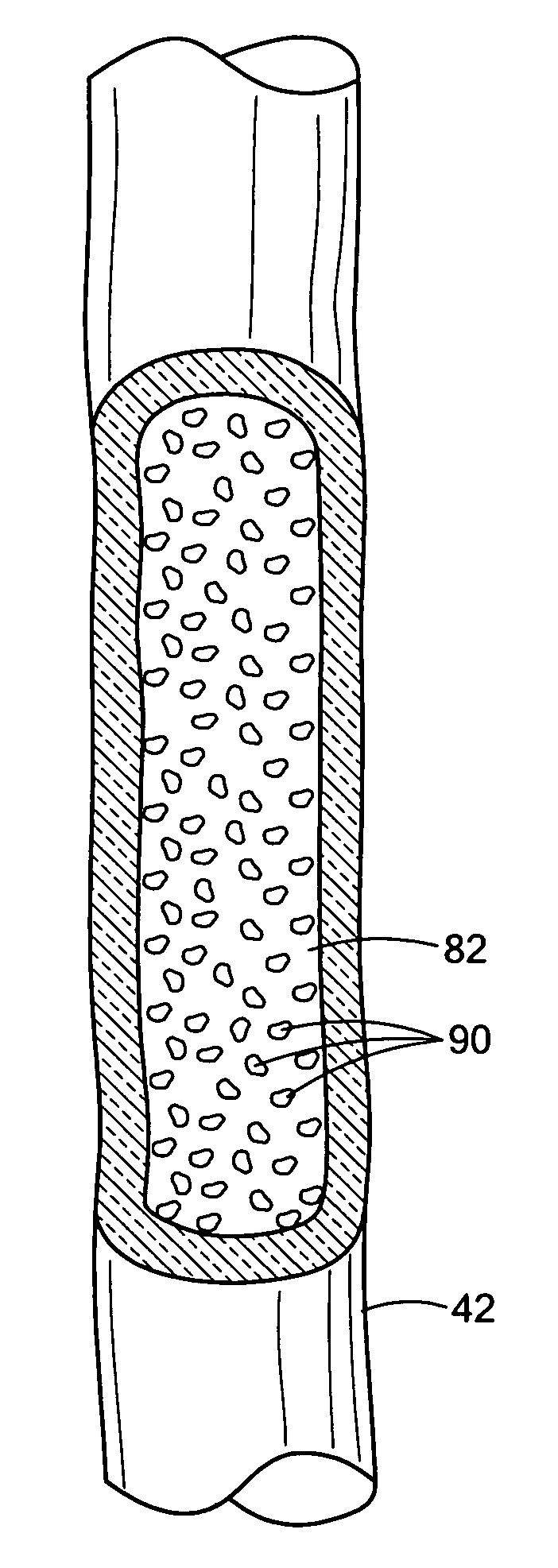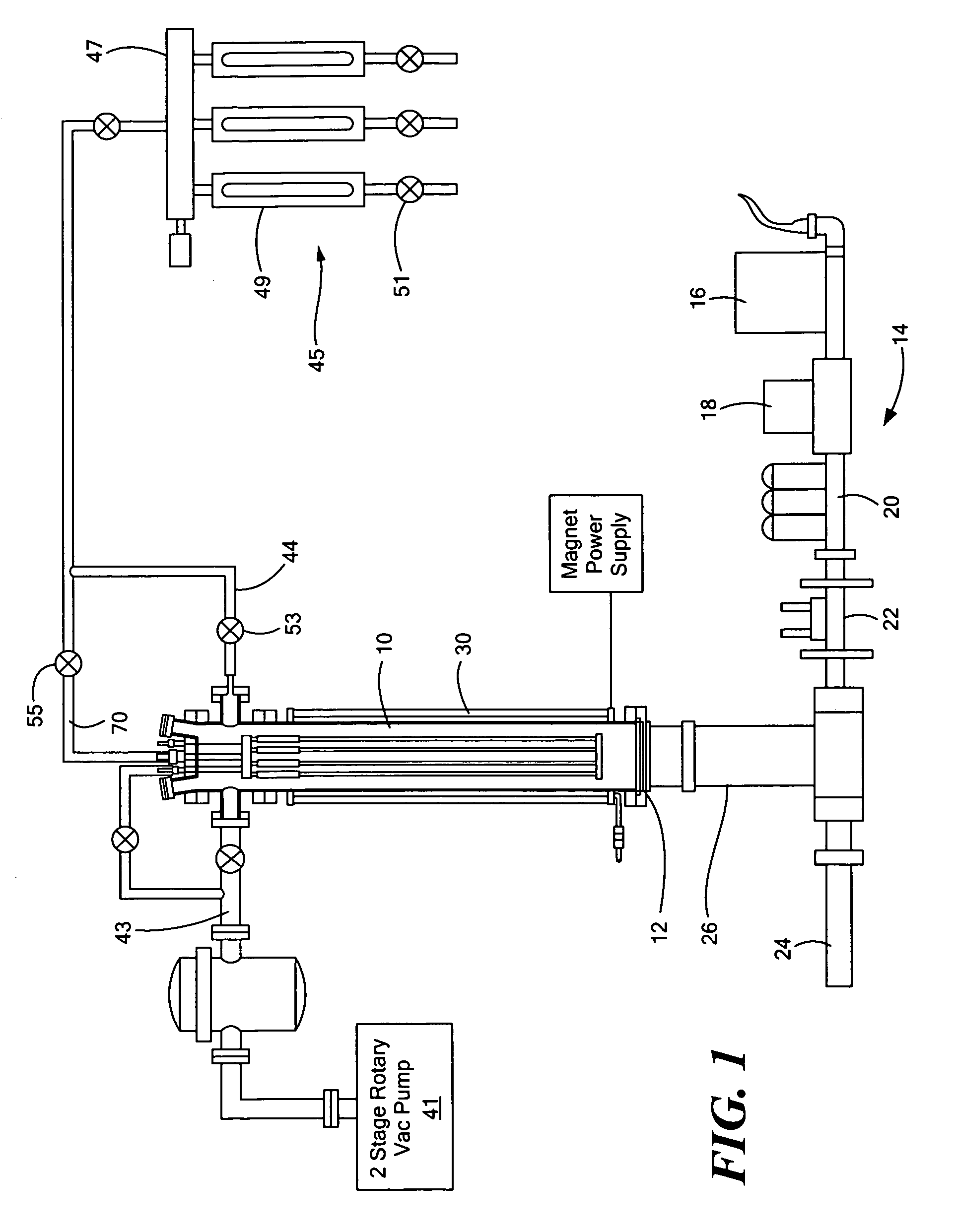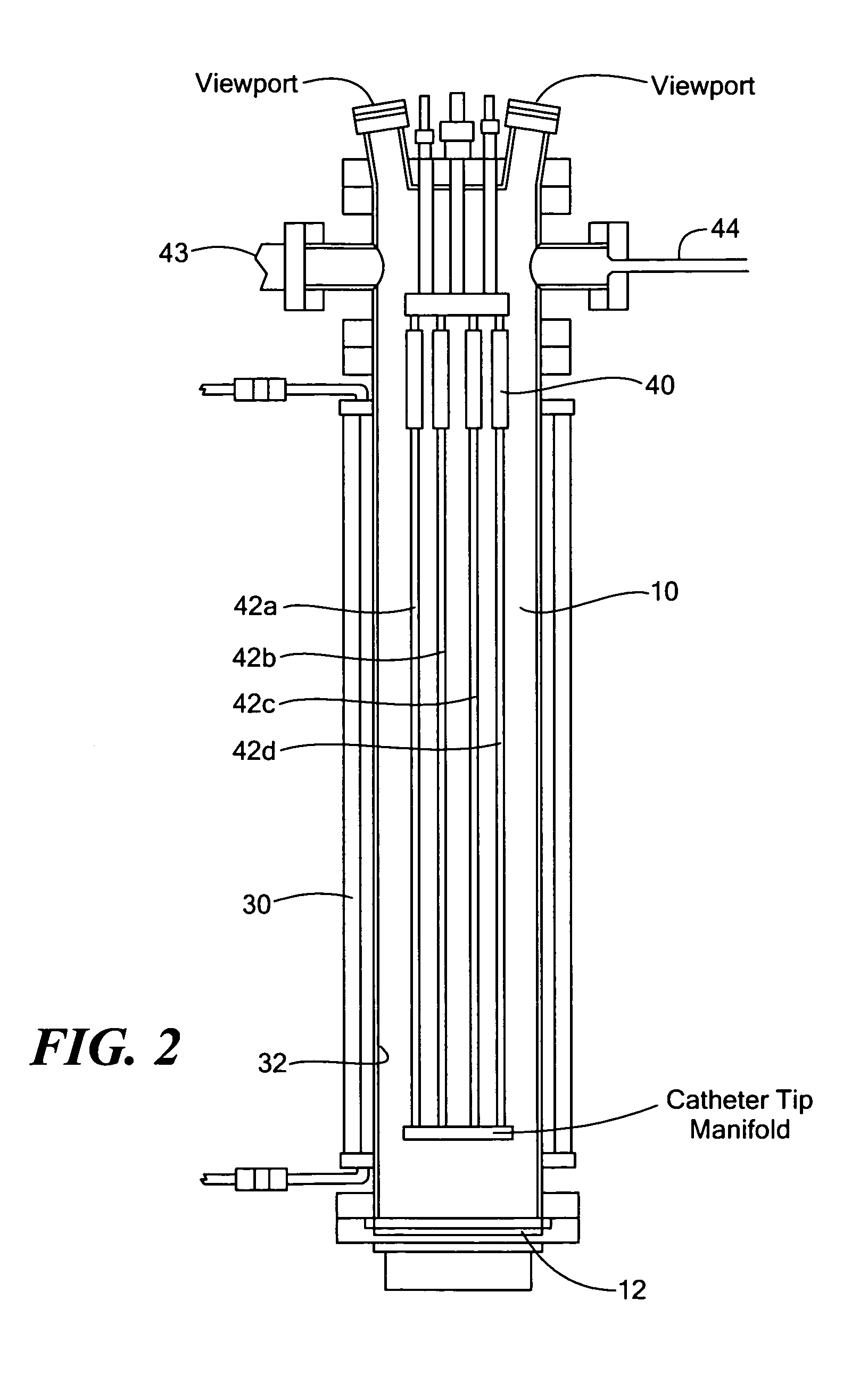System for pretreating the lumen of a catheter
a technology of lumen and catheter, which is applied in the direction of catheters, infusion needles, vacuum evaporation coatings, etc., can solve the problems of difficult pretreating the lumen of the catheter, a lesser degree of spatial control of treating the surface, and inability to provide coatings or other surface medication, etc., to achieve the effect of more efficient coupling of microwave power
- Summary
- Abstract
- Description
- Claims
- Application Information
AI Technical Summary
Benefits of technology
Problems solved by technology
Method used
Image
Examples
example 1
Silicone Rubber Tubing
[0064]A series of experiments was performed to investigate surface energy of ECR plasma-treated polymer tubing through water contact-angle measurements. First, the effect of plasma exposure duration was studied on silicone rubber tubing samples of 6.7 mm OD. FIG. 8 summarizes contact-angle data for ECR plasma treatments as a function of process time and gas in the plasma. Other parameters were kept constant: Microwave power, 100 W, total gas flow rate 0.8 liter / min, pressure 80 mTorr. For pure Ar and N2 plasmas, highest surface energy (lowest contact angle) was found for an exposure time of 8 minutes, while N2+O2 treatments produced contact angles in the 100 range down to 30 sec. exposure. The presence of oxygen immediately produced an extremely hydrophilic surface.
[0065]Silicone tubing samples were stored in room air, and water contact-angles were measured as a function of time after ECR plasma processing. FIG. 9 summarizes the data for 8-minute plasma treatme...
example 2
Polyurethane Tubing
[0070]Table 3 summarizes experimental conditions for exterior surfaces of polyurethane tubing samples and water contact-angle data immediately after ECR plasma treatment. All plasma gases produced significant reduction of water contact angle on polyurethane tubing, with argon plasma giving the lowest angles.
TABLE 3ECR plasma treatment of external surface of polyurethane tubingAverage WaterStandardPlasmaContact AngleDeviationConditions*(degrees)(degrees)N2345N2417N2 + O2545Ar292Control832*Microwave power: 100 W. Process time: 3 min. Plasma pressure: 70 mTorr. Gas flow rate: 0.5 liter / min.
[0071]Surface activation in the lumen of polyurethane tubing was shown by a dramatic change of the level of deionized water in the treated samples. After plasma treatment, water in the lumen changed from a convex meniscus below the external water level to a concave meniscus that was well above. Table 4 summarizes data on interior surface treatment of polyurethane tubing with 3.3 mm...
example 3
[0074]A demonstration was performed on silicone rubber tubing that is nearly identical to that of a hemodialysis catheter. The plasma treatment allowed for the grafting of a monomer-protein coating to the silicone rubber by functionalizing and activating the surface of the silicone polymer.
[0075]A 40 cm length of tubing with 5.3 mm OD and 3.3 mm ID (see Table 1) was configured for plasma treatment inside its lumen, and an argon plasma generated in a segment approximately 6 cm in length. Immediately following extinction of the ECR plasma and while still under vacuum, the activated surface of the lumen was exposed to glycidyl methacrylate to form a thin coating on the lumen wall. Upon removal of the silicone tubing from the apparatus, the coated segment was heated to 80° C. for 30 min. to further polymerize the monomer, and then soaked in an albumin solution (0.3 mg / mL) for 18 hrs. For comparison, a control sample of tubing, not treated with argon plasma or monomer, was...
PUM
| Property | Measurement | Unit |
|---|---|---|
| Frequency | aaaaa | aaaaa |
| Frequency | aaaaa | aaaaa |
| Frequency | aaaaa | aaaaa |
Abstract
Description
Claims
Application Information
 Login to View More
Login to View More - R&D
- Intellectual Property
- Life Sciences
- Materials
- Tech Scout
- Unparalleled Data Quality
- Higher Quality Content
- 60% Fewer Hallucinations
Browse by: Latest US Patents, China's latest patents, Technical Efficacy Thesaurus, Application Domain, Technology Topic, Popular Technical Reports.
© 2025 PatSnap. All rights reserved.Legal|Privacy policy|Modern Slavery Act Transparency Statement|Sitemap|About US| Contact US: help@patsnap.com



